Channel Islands, Guernsey: Unique, Delightful and Magical
To the French author Victor Hugo, the Channel Islands are like ‘little bits of France dropped into the sea and picked up by Britain’. An archipelago in the English Channel off the Normandy coast of France, they are divided into two British crown dependencies, the Bailiwicks of Guernsey and Jersey. Guernsey is the second largest island and a unique cruising ground. Here, Kieran Higgs, Assistant Harbourmaster with Guernsey Ports, provides his thoughts on some of the best anchorages around the islands.
Published 2 months ago
Just a stone’s throw from France
Thousands of British and European sailors descend on the waters around Guernsey each year, tempted by its culture, clear warm waters, plentiful sunshine, stunning beaches and beautiful scenery.
For sailors making their initial crossing to Guernsey the English Channel may, at first glance at the chart, seem a somewhat daunting prospect. However, crossing the channel is quite straightforward provided you’ve undertaken proper passage planning and keep a sharp lookout at all times, especially when negotiating the busy Traffic Separation Lanes. The distances involved aren’t as great as you might imagine.
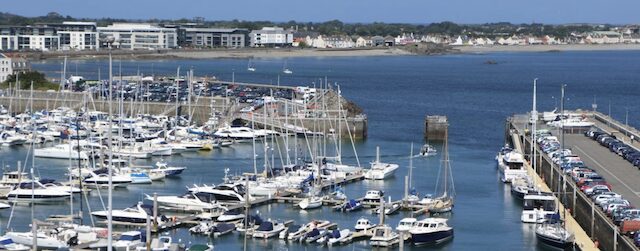

Working the tides to your advantage is of major benefit when crossing the channel; get it right and the ground can be covered with remarkable ease. Once within the Bailiwick cruising area, it is easy to plan an itinerary that will take in all the islands, as a there are some superb anchorages around the Bailiwick of Guernsey. Here are a few:
Guernsey
Rocquaine Bay – Portelet
A picturesque anchorage which provides shelter from winds north to south through east, also in light winds from the west to northwest. Vessels capable of taking the bottom may ground on a falling tide at La Lague, the beach below the Imperial Hotel, when no swell is present. The bottom is firm sand with the occasional stone, and vessels should arrive at the beach in excess of 7.5m height of tide in order to negotiate the low lying rock at the foot of the sandy bay.
Cobo Bay
In suitable settled weather it is possible to dally here a while, in 3-4m of water, sand.
Grand Havre
A sheltered anchorage in all but northerly winds, but at times subject, as all the West coast of Guernsey, to High Water swell; however good in settled weather. There are various anchorage’s but care should be taken not to be neaped.
Petit Port and Muelin Huet
A sheltered anchorage in E-NE winds but subject to be affected by a High Water swell during mid-Atlantic gales, which invariably subsides from half tide downwards, as it does in most anchorage’s on the South coast of Guernsey.
A superb anchorage to be recommended during calm settled weather, or during winds from north through to east. Anchor in 2- 5m (LAT), fine sand, North-East of Mouilliere.
Saint’s Bay
A small cove culminating in a steep sheltered valley and stream, identified by the Martello Tower nestling on the slope and a number of small boats moored fore and aft from a quay on the SW side of the Bay.
There is room for a few anchored vessels at Low Water clear inshore of the local moorings in 3m, sand, but a drying buoy exactly in the centre of this area must be avoided.


Icart and Petit Bot Bay
Le Jaonnet and La Bette Bays situated in the North East corner of Icart Bay provide idyllic seclusion in calm light North-North East airs in 3.5-4m, sand.
At the western side of the Bay lies a small but stoney picturesque cove at the foot of Petit Bot valley, again with a Martello Tower. A close neighbour to the west with a more acceptable sandy beach is Portelet. It is possible to anchor South-West of the drying rock in 5m, sand.
Le Gouffre
Close to Petit Bot, anchor in 8m of water, sand between the Vieux Poulain and Pointe de la Moye,and just east of the local moorings
Havelet Bay
Situated immediately south of St Peter Port, Havelet Bay is subject to congestion during peak times in summer (July, August), taking the overflow of yachts from St Peter Port. It is also subject to a high water swell when unsettled weather conditions in the Atlantic prevail, and is only recommended during calm periods if a peaceful night at anchor is desired.
Havelet Bay has subsea cables which run along the seabed. These should be visible on all charts and mariners are strongly advised to avoid anchoring over these cables.
Soldiers Bay
A small cove situated immediately south of Les Terres Point and so called because at one time during the nineteenth century it was reserved for the use of officers stationed at the barracks overlooking the bay. It provides a quiet and picturesque anchorage during settled weather from the west or southwest, in 2 – 5 LAT, sand.
Fermain Bay
Fermain Bay is a delightful anchorage in settled weather. One small disadvantage is the setting sun disappears at an early hour behind the high land to the west even during high summer, although some people may consider this an attribute on a fine summers evening.
Anchor in the centre of the Bay if possible in 2-5m of water (LAT), sand.
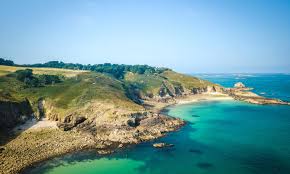

Herm
Shell Beach
Adjacent to Belvoir and arguably the best anchorage. Shell Beach is at the south end where it is nevertheless quite shallow during spring tides. A sand and shingle bottom provides good holding ground in South West-North West winds.
At high water it is possible to edge north along the Shell Beach with the help of an echo-sounder where another anchoring spot may be found South East of La Pointe du Gentilhomme.
For boats able to take the ground it is possible to dry out on the large area of sandy beach that becomes uncovered, although it is recommended that exploration is carried out by dinghy beforehand.
The name Shell Beach is derived from the millions of variously coloured shells which used to form a thick broad band the length of the beach, but which has sadly diminished in recent years.
Rosaire
A pleasant place to anchor close to Rosaire steps, although usually crowded during high season and weekends with local and visiting yachts.
Anchor in the lagoon in 3 to 4.5m of water with a sand and shingle bottom. Near the eastern side there is an abundance of vraic (seaweed) on the sea bed with the resultant tendency for anchors not to hold.
There are a few private moorings reserved for passenger ferries and local boats, some of which become free at the end of the working day.
Yachts wishing to take the ground may do so north of the ‘lagoon’.
Mooring of boats and dinghies at the Rosaire landing (which covers just after half flood) is not permitted, but a limited number of tenders or dinghies may be manhandled up to rocks above the HW mark, but clear of the landing steps.
Belvoir Bay
A very picturesque little cove on the east side of Herm, steeply shelving but levels out to a shoal at Low Water.
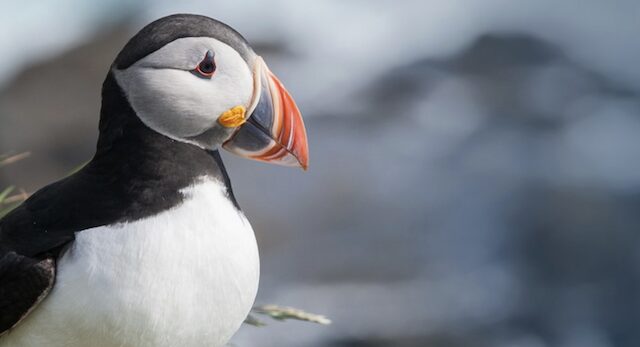

Herm Harbour
Peacefulness, outstanding natural beauty, fabulous sandy beaches, scenic cliff walks and crystal clear safe bathing all make Herm a definite “Port of Call” for visiting yachts. The half tide harbour is safe in virtually all weathers. With its easy approach from St Peter Port, it is ideal for bilge keelers or multihulls. Moor using ground chains and bouys on the sandy beach or enter the inner harbour. Keel boats can lie against the walls.
There is no charge for mooring. To remain overnight, visiting vessels should obtain permission which can easily be obtained from the harbour administration office or the White House Hotel. The harbour has a sandy bottom and takes about 8 boats moored fore and aft. The sandy harbour beach is recommended where there are good ground chains and space for 30 boats. The harbour is safe in virtually all weather conditions and generally not subject to surge or swell.
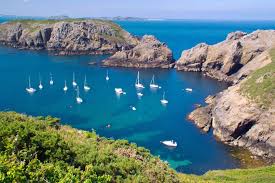
Sark
Banquette Bay
Banquette Bay is the name for the triangular area bounded by Sark and Brecquou on two sides, but there are several bays worth mentioning as potential anchorages:
- Port a la Jument – close north-east of the Gouliot Passage – anchor in 3m, shingle.
- Saignie Bay – immediately north of the high rock pillars of Les Autelets.
- Les Fontaines Bay – The bay provides shelter for a couple of boats in S – SW winds. Anchor in 5m, sand when the S end of La Petite Moie touches Banquette Point.
La Greve de la Ville
Situated NW of Point Robert Lt. House, this pretty anchorage is very suitable in South-Westerly winds or quite weather. Anchor in 4m, close to the pebbly beach.
Derrible Bay
A good anchorage when not affected by swell, situated between Derrible Point and Point Chateau. Anchor in 4m, sand anywhere in the bay.
Dixcart Bay
Situated next to Derrible Bay, this is probably the most popular anchorage on the east coast of Sark, much favoured by Jersey and French yachtsmen.
Between Dixcart and the south side of La Coupee, several caves can be explored by dinghy if the tide is at the correct height, from 3 hours after High Water until Low Water. On a rising tide with a swell present, spectacular blow- holes are operative, caused by the swell and the compression of the air in the concave roofs of the caves, occurring between half – flood and 1 hour before High Water.
Rouge Terrier
Rouge Terrier anchorage is immediately north of the Moie de Breniere and close to the shore in 4 – 6m, sand and good in settled weather.
Port Gorey
The small indentation forms a pleasant anchorage in fine weather. At the mouth of the cove there is 11m, sand but further in there are scattered boulders and sand in 3 – 4m. sand.
La Grande Greve
A much favoured anchorage by visiting British and French yachtsmen during Easterly winds, possibly due to its easy access. Anchor under La Coupee in 4 – 5m, sand and shingle, taking care to avoid the two buoy’s which dry 1.3m and 1.0m respectively.
Havre Grosse
Sheltered from most winds except from the South West, and big spring tide swell, this popular anchorage is sometimes crowded during high season and weekends. Several permanent moorings present are available to members of the Sark Yacht Club, thus to non-members anchoring is obligatory, holding in 3 – 8m is only moderate to good, due to the amount of wrack.
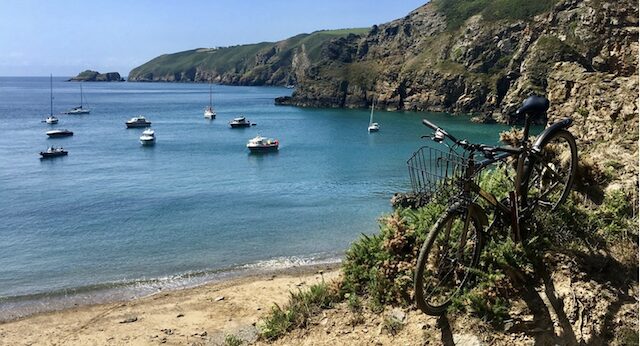

Useful Information
For the latest yachtsman’s Guide see www.guernseyharbours.gov.gg for all the necessary information.
…………………………………
Related Links:
…………………………………
The opinions expressed in this article are the author’s own and do not reflect the view of Noonsite.com or World Cruising Club.
…………………………………
Noonsite has not independently verified this information.
…………………………………
Find out all news, reports, links and comments posted on Noonsite, plus cruising information from around the world, by subscribing to our FREE monthly newsletter. Go to https://www.noonsite.com/newsletter/.
Related to following destinations: Alderney, Braye, Channel Islands, Gorey, Guernsey, Jersey, St. Aubin's Harbour, St. Helier, St. Peter Port, St. Sampson
Related to the following Cruising Resources: Anchorages, Cruising Information




